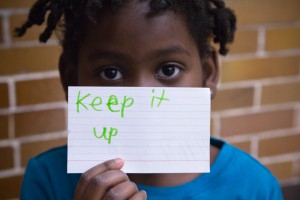The desire for fulfilment. The urge for a challenge. The yearning for more out of life.
These are common emotions, familiar to most professionals who, at one stage or another, found themselves trapped in an unsatisfying job that failed to feed their appetite. Now imagine this feeling as a child: Day in, day out, at the same desk, begrudgingly carrying out the same mundane tasks that dramatically neglect to pose a challenge. As others around you struggle, you sit patiently waiting for the class to catch up, desperately scanning the four walls of the room for some form of stimulation, with little success. This, sadly, is the school life of many gifted children as a result of a lack of resources and services, and a system that falls drastically short of meeting the needs of every student.
The Flaws of Differentiation
When we think about differentiation, the struggling student generally springs to mind, whose silent cries for help continue to go unanswered. But what about the unfulfilled student craving a challenge, following a similar path of discontent? Despite the gifts this student possesses, boredom ensues, and a love of learning is replaced with the desire for something more, in a continuous effort to fill the void that craves motivation.
The National Association for Gifted Children (NAGC) estimates that there are approximately 3 to 5 million academically gifted kids in the United States, which equates to around 6 to 10% of the student population. Despite these numbers, according to the 2014 National Surveys of Gifted Programs, “nearly 40% of districts with elementary gifted programs, 51% of the districts with middle school gifted programs, and 60% of the districts with high school gifted programs received no state funding.” So the task of catering for the gifted often sits squarely on the heads of educators and parents, simultaneously catering for so many others.
Differentiation has been offered as a solution to the obstacle of reaching every student, despite its challenging implementation. Many teachers continue to struggle with ensuring class-wide equality, a task that many deem impossible. But is there another way?
Personalization for the Gifted
Adaptive learning was driven by the realization that tailored learning for every student in a class/school is simply unachievable on a manual basis. Learning platforms are now making it possible to scale one-to-one instruction, personalizing the learning experience for every single student. This kind of technology could transform how gifted children develop, embarking on personalized learning paths paved with the resources that best meet their needs. Taking a more self-directed approach to education, gifted students are given the opportunity to claim ownership over their learning, feeding their curiosity with unlimited resources.
The adaptive learning platform, Fishtree, combines personalization with competency-based progression, allowing each student to demonstrate mastery through adaptive learning. With the ability to assign an activity both to individual students and to an entire class, along with system-generated resources and assessments, the differentiation process is made a lot more manageable. Social media and analytics also play their part, keeping the teacher involved in the learning process at all times, while at the same time facilitating autonomy.
As efforts continue in the search for more support for our gifted, adaptive technology is laying the foundation for better learning solutions for all. By allowing every student the opportunity to learn at their own pace, and in their own way, traditional differentiation is losing its appeal. Whether in need of a helping hand, or eager for a challenge… there’s no prioritization in personalization.
Like what you’ve read? Find out more about personalized learning solutions that cater for every student, or try adaptive learning for yourself.
About the author:
Lorna Keane specializes in language teaching and has taught in second and third-level institutions in several countries. She holds a B.A in languages and cultural studies and an M.A in French literature, theory and visual culture. Follow her on Twitter or connect on LinkedIn.
Image credits: Francisco Osorio / CC BY 2.0
